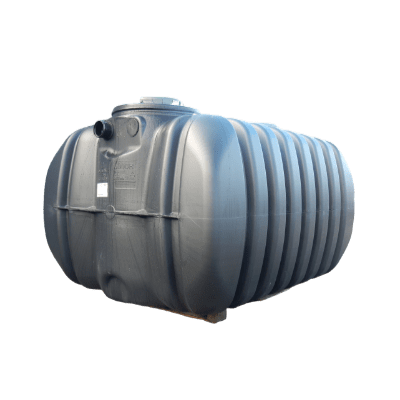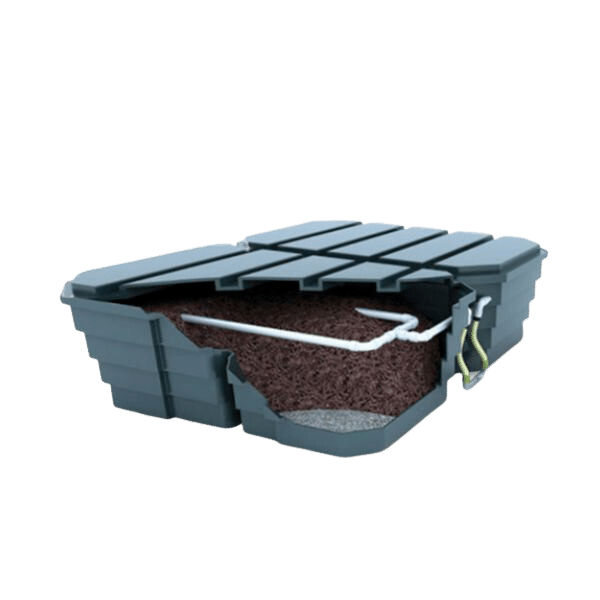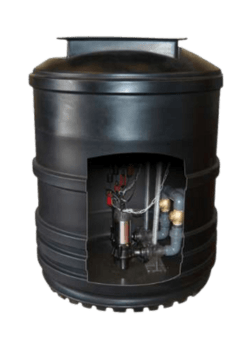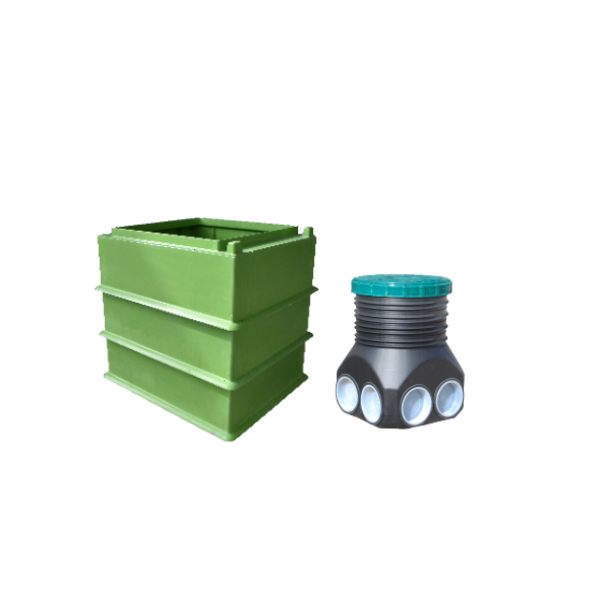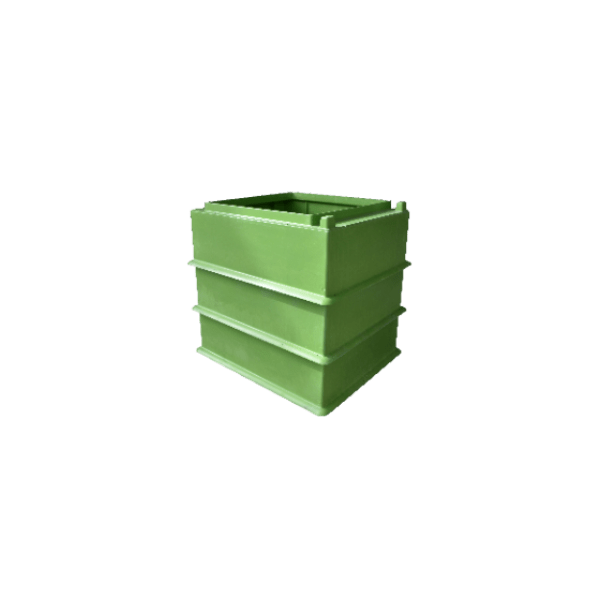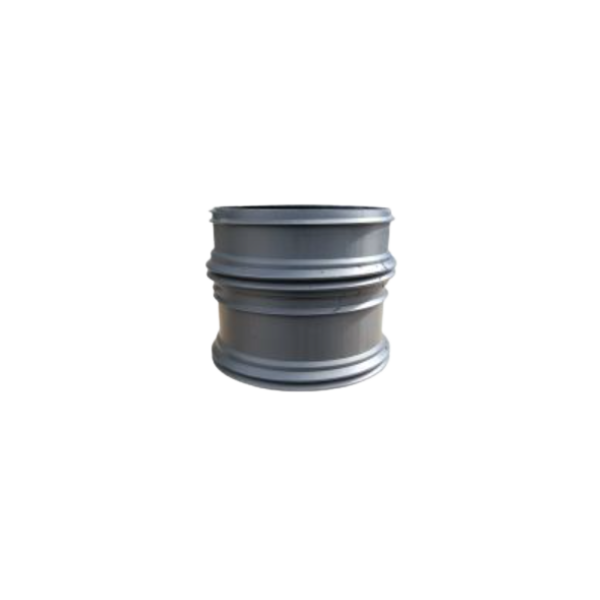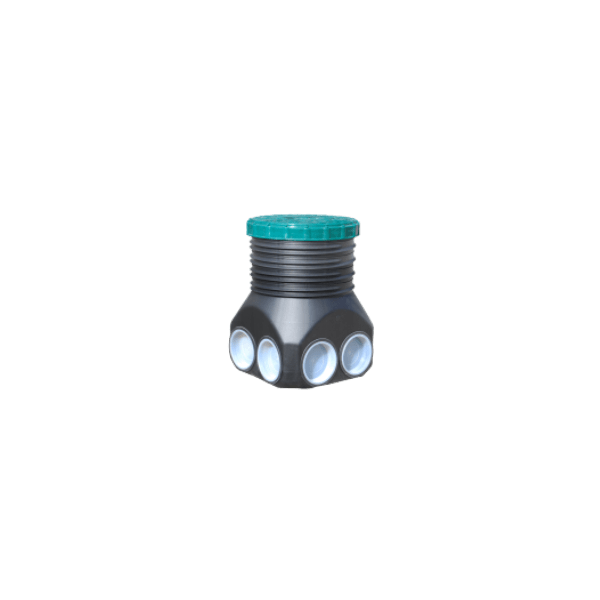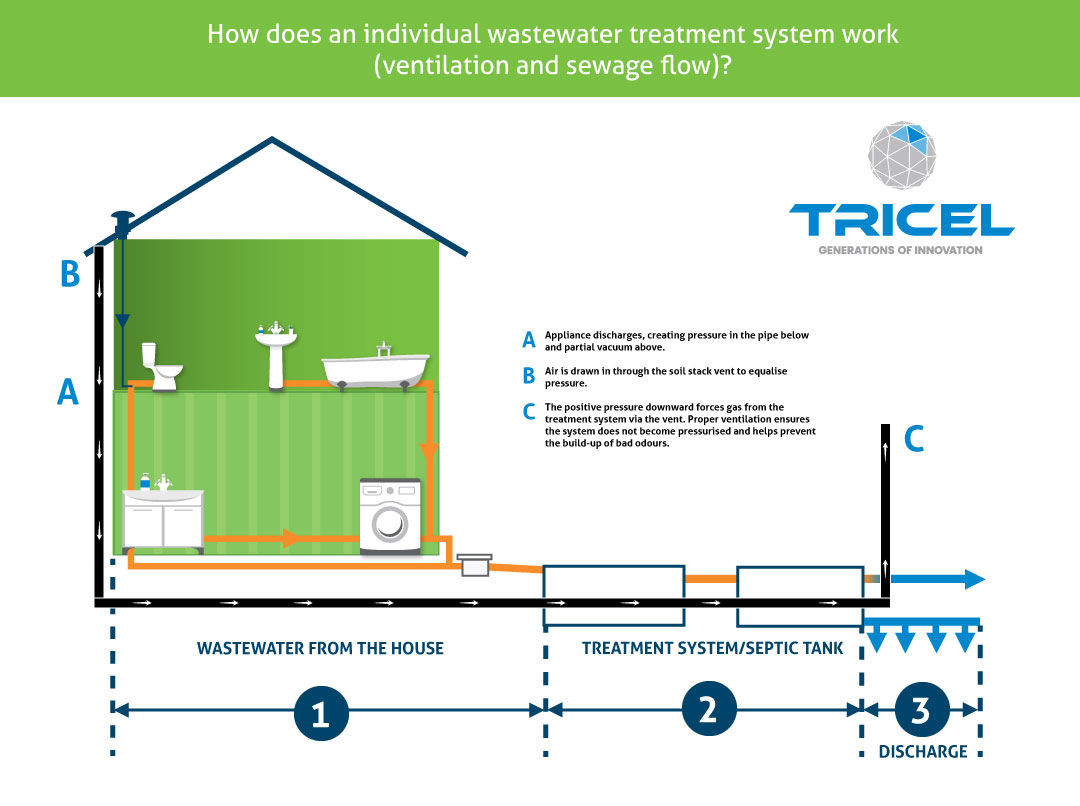SEWAGE TREATMENT
Wastewater treatment systems: what to know?
OVERVIEW
A Wastewater treatment system is a solution that treats efficiently sewage and has several advantages as the system is:
- Compact (less than 10m2 of floor space for a complete installation)
- As efficient as a conventional sewer
- Reliable
- Can be installed on difficult and compact sites
- Cost effective (taking into account installation, running costs and maintenance)
Can be considered as disadvantages:
- Needs energy to operate (air compressor, turbine)
- Annual maintenance is required (which can be binding on some models)
- Can be recommended for holiday homes (secondary houses). SBR systems and those with a sludge return process can be more suitable for holiday homes, depending on the occupancy.
All Wastewater treatment system needs to be treated before being released into the environment. Several systems are available, in this article we will go through domestic wastewater treatment systems and see their advantages and disadvantages that are important to consider.
What is a wastewater treatment system?
We use a wastewater treatment system tank for the storage and treatment of sewage, primarily in rural applications where no mains sewage system is available for connection. Following treatment, we transform the effluent to be safe and drains from the tank to a location with a soakaway or watercourse.
The wastewater treatment system, or plant, operates as an approved method for the non-collective sanitation for houses not connected to mains sewer drainage. It does so by using the same principle as the typical treatment plants found in a local town or cities.
All such wastewater treatment system in use within the UK must be CE certified to CE12566-3.
Wastewater treatment systems: how does it work?
In this section we will see in detail the treatment process of our wastewater treatment plant: the Tricel Novo.
During this process, wastewater is treated using a naturally occurring bacteria. These same bacteria grow while feeding on the effluents and oxygen.
Wastewater treatment systems can have between one and three chambers, they are normally prefabricated with all the chambers within one single unit. Inside the unit, the system works in three phases: primary treatment, aeration and secondary treatment.
- Primary treatment: during this phase separation of the effluent begins as the heavier sludge settles at the bottom of the tank.
- Aeration: this is the process that brings oxygen to the microorganisms in the treatment plant as air is introduced using a diffuser.
- Secondary treatment: the final phase of the purification process. Residual sludge is still present in the treated liquid, and as they are heavier, they will once again settle to the bottom of the tank. At the bottom of the tank a sludge return system will transfer these impurities into a new treatment within the aeration phase.
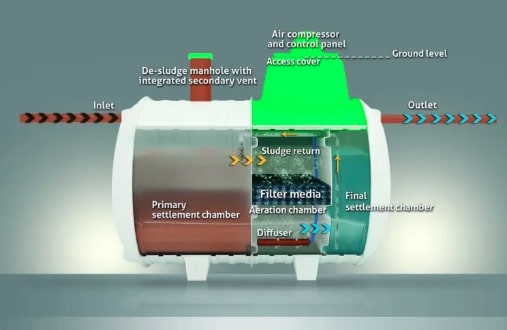
Interact with the Tricel Novo Treatment Plant
How to interact with the tank
- Click on the numbers to see the annotations.
- You can also switch between the treatment process stages (yellow circle at the bottom left-hand corner) and the anatomy of the Novo (green circle at the bottom left-hand corner).
- To view in Virtual Reality (VR), click the square at the top right-hand corner and simply scan the QR code with your phone.
- In order to check the dimensions, click on the spanner icon.
- To download an image of the Novo, click on the camera icon (top right-hand corner)
7 Key Reasons to Choose a Tricel Novo UK 6
There are many key reasons to choose a Tricel Novo wastewater treatment plant. Please find below some of them.
Highly durable SMC tank
A Tricel Novo is constructed from a compression moulded SMC tank. Compression moulding is one of the most technologically developed processes for manufacturing structural composites. Components are manufactured under heat and high pressure and have unrivalled strength and durability over standard GRP or polyethene tanks.
SMC is unique in the wastewater treatment industry. Tricel SMC tanks have operated in some of the harshest climatic conditions for over 50 years with no defects.
Environmental agency compliance
Tricel Novo complies with the Environment Agency General Binding Rules in England, Natural Resources Wales exemption criteria and SEPA requirements in Scotland. Tricel advises consulting with your local agency on the effluent treatment required.
Fully tested and certified
All Tricel wastewater treatment plants have been tested for European certification EN 12566-3. This certification pushes all plants for strength, water tightness, durability and treatment efficiency.
By using a wastewater treatment plant which is CE certified. You can rest assured that it has complied with tests and inspections, guaranteeing an elevated level of security and efficiency.
Minimum maintenance and repair costs
No moving parts or pumps in the plant, ensuring reliable operation. Minimal maintenance and repair costs.
Lower installation costs
No concrete backfills are required for installation on most sites saving up to £300 over lower quality GRP or polyethene alternatives from competitors.
Fitted alarm
There is a factory alarm fitted onto all Tricel Novo systems. This system will warn you if something needs to be done on the Tricel Novo.
Ceramic diffuser
Tricel’s ceramic diffuser is unique in the domestic wastewater treatment plant market. It will last twice as long as the standard competitors’ rubber equivalents. This saves money on both call-out fees and replacement parts.
Tricel product range
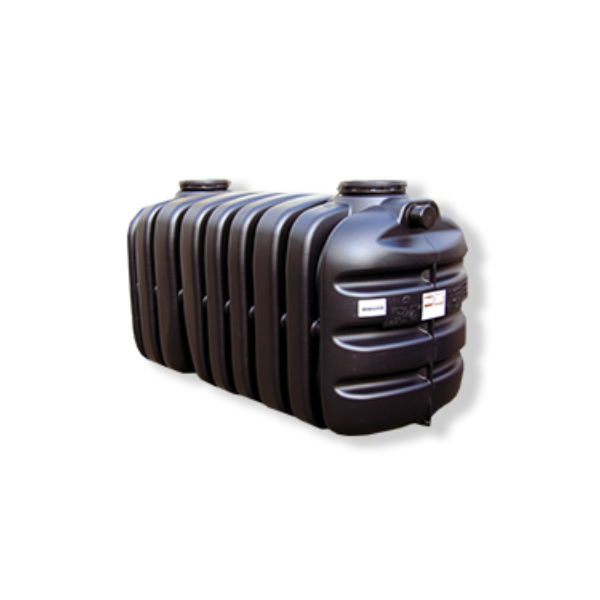
Tricel Vento Septic Tank
Shallow dig tank, strong & robust underground tank, No electrical or moving parts. Ideal for sites with good drainage & plenty of space.
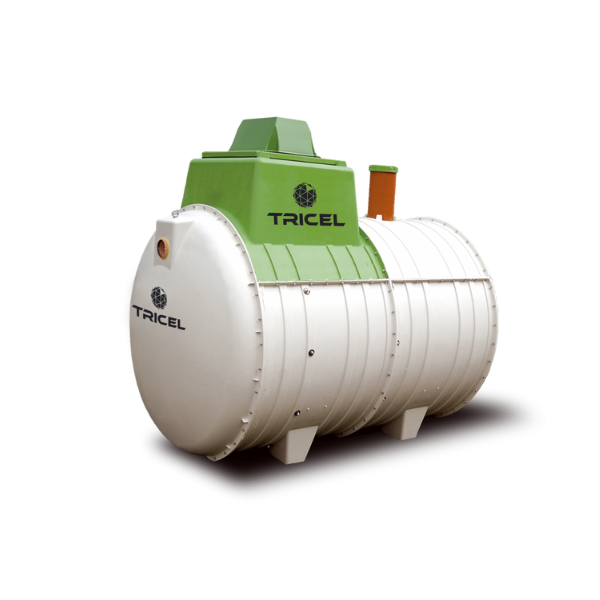
Tricel Novo Sewage Treatment Plant
Durable & long lasting SMC tank, shallow dig tank, easy installation (Plug and Play), long life components.
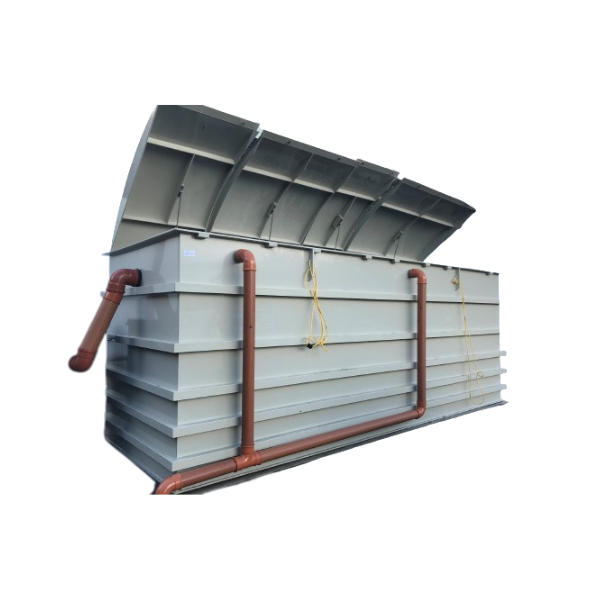
Tricel Maxus Sewage treatment Plant
Commercial plant. Submerged Aerated Filter (SAF) technology. Ideal for every project over 50 Population Equivalent.
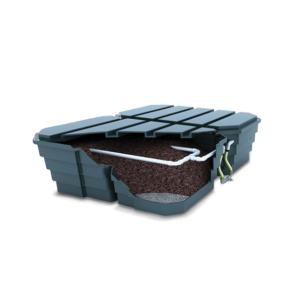
Tricel Puraflo Packaged filter
Ideal for sensitive sites, compliant to British Standard, small footprint.
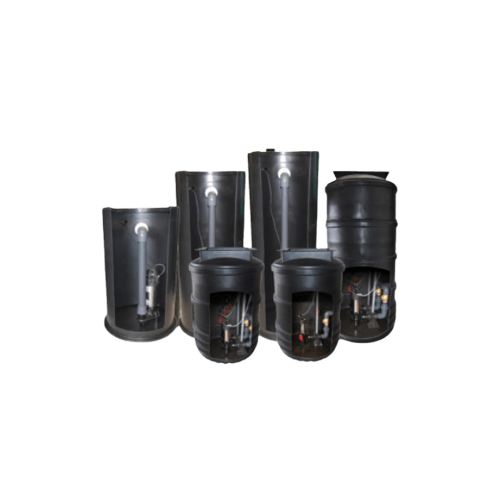
Tricel Pumping Stations
Pump fluids from one place to another where gravity drainage cannot be used, easy and trouble-free installation
Who are the UK regulatory and advisory bodies?
- England & Wales – The Environment Agency
- Scotland – Scottish Environmental Protection Agency (SEPA)
- Northern Ireland – Northern Ireland Environment Agency (NIEA)
50 YEARS IN BUSINESS
A highly successful multinational corporation with over 50 years’ valuable industry experience
SEWAGE TREATMENT PLANTS
Plants available for all capacities, from 1PE up to 50PE. Free advice on request.
FAST DELIVERY
On-time delivery is a core requirement of our successful business operations

Recent projects with Tricel Novo UK 6 treatment plant
Tricel manufacture deliver & install sewage treatment plants across a wide range of industry sectors throughout Ireland & the UK. The company also provide import/export services for our international clients. Top quality material offers outstanding capabilities including long life, durability and is a cost-effective solution for sewage treatment even in the harshest environments.
Tricel has installed many of its Tricel Novo Sewage Treatment Plants across the UK.
Check some of our projects by clicking on the button below.
Frequently Asked Questions
A cesspool is a simple storage vessel with an inlet and no outlet. It’s a sealed storage vessel; all the water coming in stays within the tank. The advantage is it doesn’t need an outlet. The disadvantages are: there is no treatment, the tanks are huge, and it needs regular emptying. Everything which has gone in must be sucked out. Ideal for sites which have got very infrequent use (Sheppard huts, for example).
A septic tank has an inlet and an outlet; it’s a simple overflow system. See how a septic tank works here. The advantages of the septic tank are there is no mechanic and no electricity requirement for it to work. The disadvantages are you are discharging dirty water, and untreated sewage effluent, as a tiny breakdown has occurred in the tank. You can only release water to a drainage field for the water to go through the subsoil to treat the water.
A sewage or package treatment plant has an inlet and an outlet; the wastewater is treated inside the tank. Aeration is provided inside the tank for the aerobic bacteria to feed on the waste and remove it from the liquid. The advantages are the wastewater is treated and can be discharged to a watercourse.
Many package treatment plants are available on the market:
- Trickles filters
- Rotating Biological Contactors (RBC)
- Mobile media bio-reactors
- Activated Sludge systems
- Sequence Batch Reactor systems (SBR)
- Fixed Bed Systems (like the Tricel Novo)
UK sewage treatment plants must comply with EN 12566-3 2005 regulations.
You should also hire a professional to install your sewage treatment system. For any sewage treatment plants you intend to install, you should also check your local guidelines to determine if planning permission is required.
A sewage treatment plant is where domestic wastewater and sewage are treated. The sewage treatment plants break down organic matter through the primary settlement and aeration chambers. Sewage treatment plants require little maintenance and have low running costs, and sewage effluent is discharged into drainage fields or watercourses.
For example, the required standards are 20:30:20 for BOD, SS, and NH4.
Tricel® has achieved an 11:16:9 result during independent testing.
In order for the biomass to reach its optimum purification, it may take up to 16 weeks.
You may be able to discharge directly into a watercourse or to a percolation area depending on your region. Find out which option is best for you by contacting your local council.
The sewage treatment plant’s size depends on the effluent volume from your house. It is determined by the number of people using the system, which is calculated based on the number of bedrooms in your home. If you need further information, contact our team.
Occasionally, your sewage treatment plant will need to be emptied due to the accumulated sludge inside – usually once a year. The frequency of emptying your treatment plant depends on its size and usage. See our dedicated page about desludging septic tanks and wastewater treatment plants.
1) to prevent surface water from entering the tank and overloading the system as this can inhibit growth of the bacteria and could reduce the effluent quality.
2) to prevent water getting into blower housing which can harm the control panel and the air blower.
Learn more about Tricel Novo risers.
Get in touch
